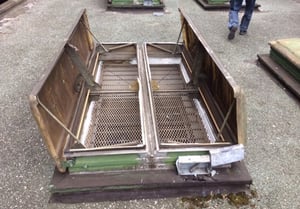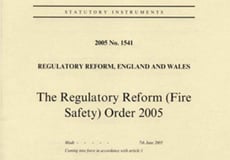 Between 2017 and 2018, there were 801 residential high-rise fires attended to across the UK, with 73 fatalities and many more casualties recorded as a result of smoke inhalation and other injury.
Between 2017 and 2018, there were 801 residential high-rise fires attended to across the UK, with 73 fatalities and many more casualties recorded as a result of smoke inhalation and other injury.
Properly functioning smoke control systems are integral in helping to keep terrible figures such as the above mentioned at a much lower rate.
How do properly functioning smoke control systems help reduce the effects of a fire in a residential tower block?
Smoke control systems have a number of practical and safety benefits, which is why they are considered ‘life-safety equipment’, with strict regulations applied to them.
- By venting smoke from the building, the occupants can clearly see fire exits, making their escape routes much faster and safer. As well as smoke being highly toxic to humans (statistically, MORE people die from smoke inhalation than burns or other fire-related injuries), thick smoke is intimidating, and causes physical and mental barriers for victims.
- By venting smoke from the building, fire fighters have a much easier, faster route to accessing the fire and also rescuing trapped tenants. Just as the smoke control systems help the tenants to escape quickly and safely, they help the fire fighters reach and attend to the cause of the fire more quickly, allowing them to contain and extinguish it much more effectively.
- Smoke control systems vent heat out of the building, meaning sprinkler systems are activated in a much more focused way.
When heat is not vented from a building, the overall internal temperature could reach a point where the sprinkler heads may be activated over areas where there is no fire at all. This depletes the much needed water reserves faster, as well as reducing the general effectiveness of the sprinklers in doing their job. - By venting heat from the building, the structural integrity has a better chance of staying in tact.
One of the worst things that could happen in a major blaze is the structural integrity of the building giving way and collapsing it entirely. Aside from the obviously catastrophic danger it would mean for anyone still inside, it will also be disastrous in terms of the cost to building owners and operators. A properly functioning smoke control system will continuously vent heat from a building in the event of a fire, significantly reducing the risk of collapse.
Smoke control maintenance obligations under the RRO.
For life-safety equipment such as smoke control systems, the building operator or owner is required by law to provide a suitable system of maintenance to maintain the system in an efficient state, efficient working order and in good repair.
This is a requirement of the Regulatory Reform (Fire Safety) Order 2005. Furthermore the DCLG Guides to the regulations suggest that "The smoke control system should be maintained by a competent person who is familiar with the fire engineering performance specifications of that specific system." Colt can advise you on the scope of these Regulations.
The regulations do not specify a maximum time interval for maintenance, but BS 5588-129999 recommends annual maintenance of smoke control systems and alsoslo specifies the frequency of testing and maintenance.
It is also mandatory in the UK for any residential building over 4 stories and commercialicla buildings with a floor over 18m above fire service access level in height to have a functioning smoke control system installed. If you own or operate a building such as this, when was the last time you had your smoke control systems checked and serviced?
 RRO Whitepaper
RRO Whitepaper
For more detailed advice on your obligations as ‘the responsible person’, download and read our whitepaper ‘Maintaining smoke control systems and the RRO.’.
